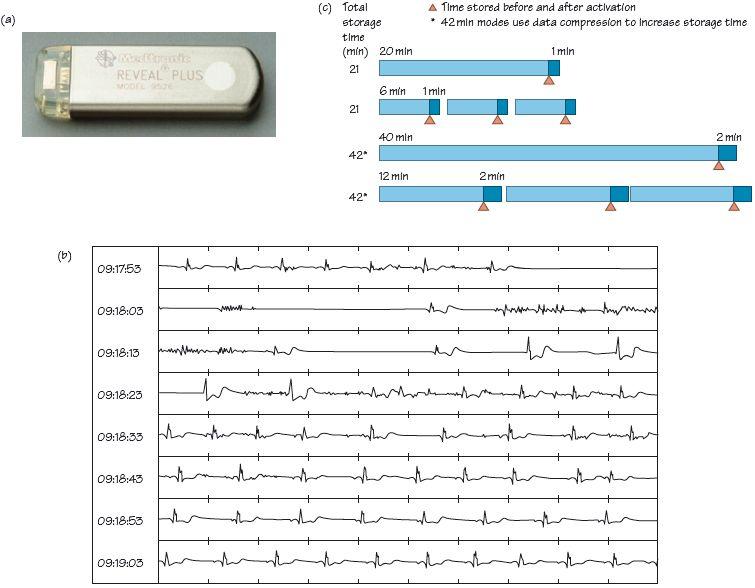Fig. 61.2 (a) Internal loop recorder, a Reveal® device, which is implanted subcutaneously in the left upper chest. (b) Recording from a Reveal® device, showing profound bradyarrhythmias. Each line is 10s long. The trace shows sinus arrest with ventricular escape beats; the sinus arrest lasts about 30s, during which 8 ventricular beats occur. The longest pause is nearly 10s long, during which syncope cccurred. The patient responded well to DDD pacing. (c) Memory functions of the interval loop recorder: the device can be programmed to whatever memory function is felt most appropriate for the patient. The key advantage of the Reveal® device is that it allows for the analysis of an ECG before an event starts – critical if one wishes to determine whether a brady or tachycardia underlies syncope.

A key aspect in the investigation of symptoms that could be arrhythmic is to obtain an ECG during the event (Table 61.1). An ECG remote to the event along with the clinical history gives clues to the diagnosis, but the ‘clincher’ is the ECG during the event. How best to obtain such an ECG depends on the nature and frequency of symptoms:
- Palpitations (breathlessness, etc.): if they last long enough to present to hospital or general practitioner surgery, etc., telling the patient to report to such a facility immediately symptoms start is the best approach. If they do not last this long then a 24-h ECG (see Chapter 63) may be diagnostic. If symptoms occur every few days, a 7-day ECG (known by its commercial name as an ‘R’ test). If symptoms occur weekly or so an externally applied single channel ECG machine (‘Cardiomemo®’ device, Fig. 61.1) is the right approach.
- Syncope: an ECG is diagnostic if obtained at the moment syncope starts. ECGs recorded after the start of the event are usually nondiagnostic, so the ECG machine must be in place prior to the onset of symptoms

Stay updated, free articles. Join our Telegram channel

Full access? Get Clinical Tree


